| Web
and Book design,
Copyright, Kellscraft Studio 1999-2008 (Return to Web Text-ures) |
 (HOME)
|
|
AROUND AND ABOUT BOSTON THE Fenway drives of Boston present many fine stretches, chiefly beautiful for the meandering lines of the waterways. These are all together on the south side of the city. Boston approached from the west also escapes unpleasant driving features, as one enters at once into the better part of the city. To approach Boston from the north with any degree of agreeableness one must swing around through Cambridge and, even so, there is much that one could spare. From the northwest the approach is rather agreeable along Massachusetts Avenue. 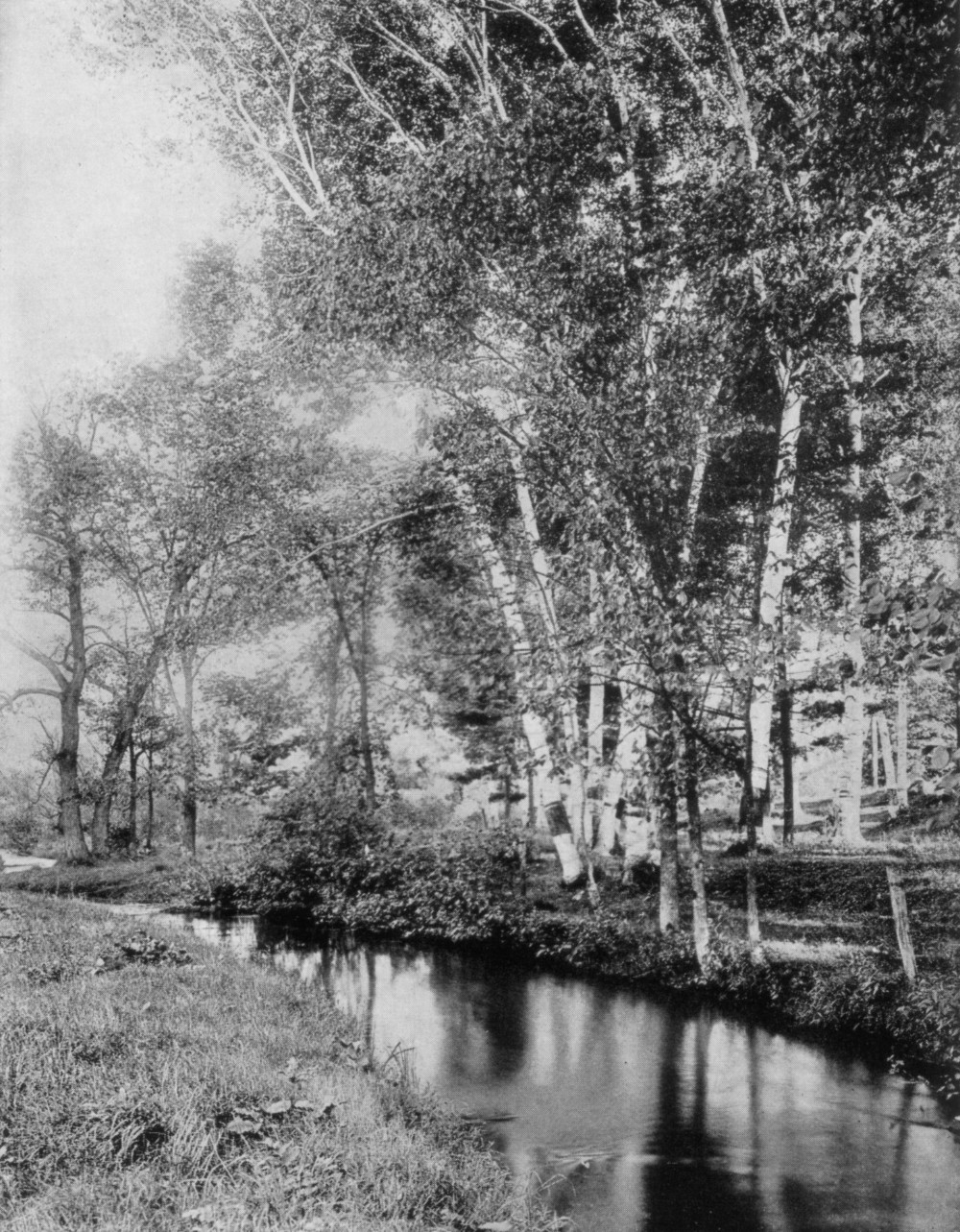 MIDSUMMER GLORY - STOCKBRIDGE 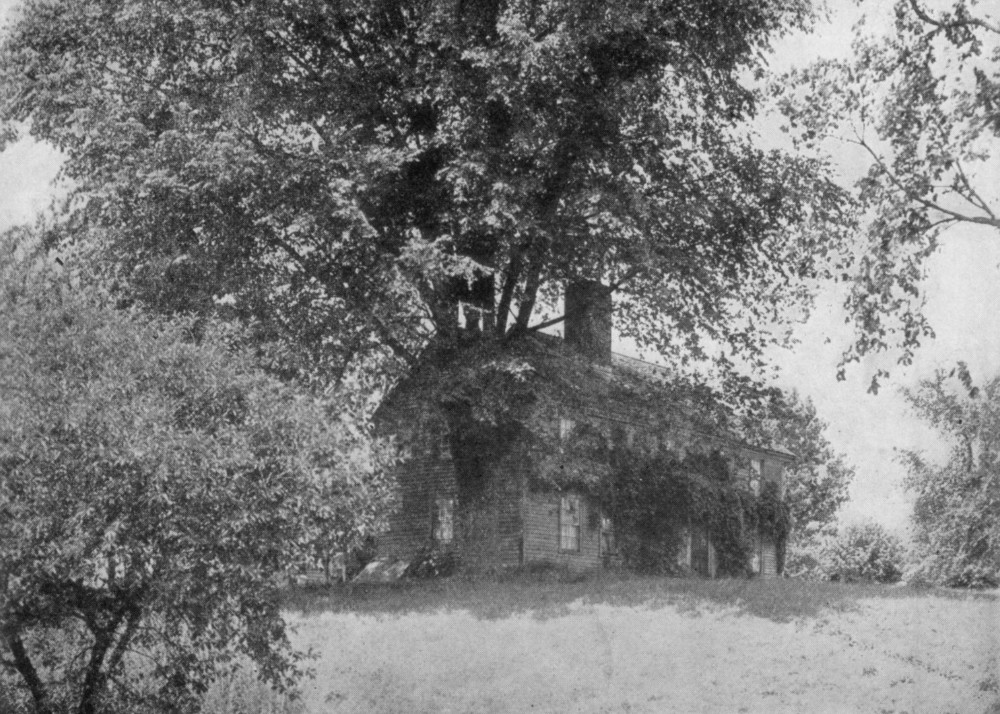 BALCH HOUSE - BEVERLY, BEFORE RESTORATION 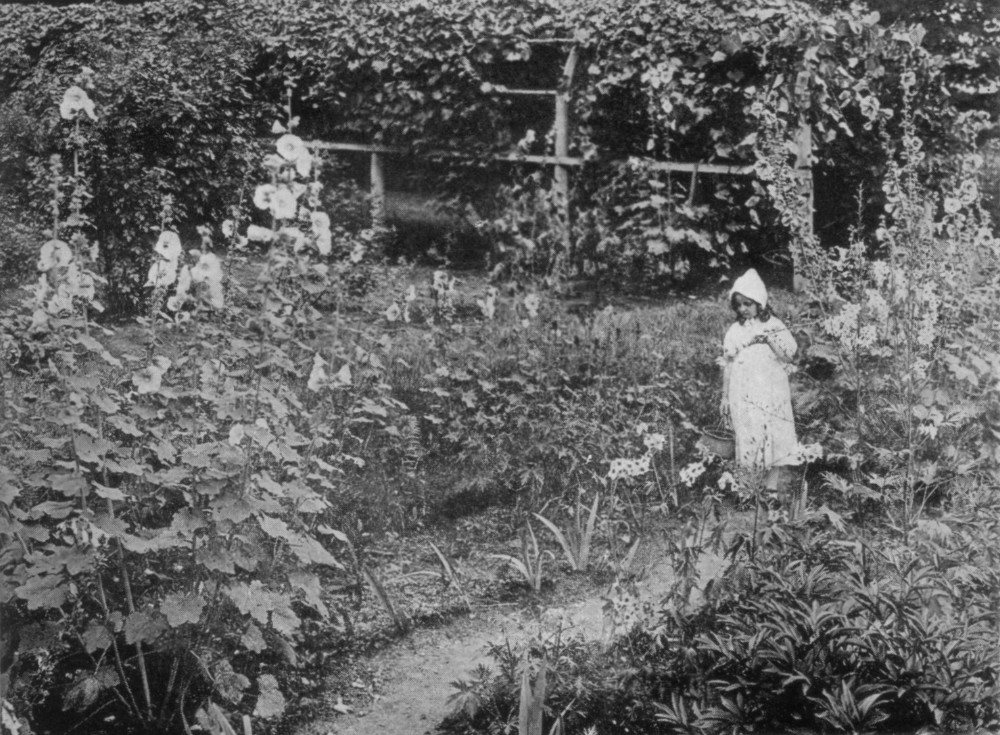 ELIZABETH IN HER GARDEN - FRAMINGHAM THE WINSLOW HOUSE, MARSHFIELD There are large marshlands to the
north and northwest of Boston and it is probable that they will never be
redeemed to beauty as there are so many obstacles. At Medford, however, and in
Cambridge tidal dams and systematic dredging have obliterated the mud flats and
the formerly offensive conditions at low tide, and have made the Charles and
the Mystic real sources of beauty rather than of ugliness. This is a highly
satisfactory piece of work and redounds to the everlasting honor of those who
toiled for it so long and so faithfully. The Charles, itself, between Boston
and Cambridge has also been redeemed by filling and holding it to its course,
and the bridge work so far undertaken and that which has been projected is of
such a character as to give the city a distinctive and noble setting as viewed
from Cambridge. In fact, we do not know of an American city that can compete
with Boston in these respects. New York is frankly constructed of
pyramids of masonry and the writer is so averse to such Babel structures that
the work of an etcher like Pennell cannot lure him to believe in their beauty. Within Boston very little remains of
the earliest days. The Paul Revere House has been rescued but such was its
condition and such is its setting that it loses much of the nameless charm
afforded by mellowed age and freedom from encroaching modern edifices. The Old
North and the Old South churches and the Park Street church, eloquent each of
various periods of teeming history, are with us yet. But these and the various
other structures, old and new, which go to make up the notable architectural
features of the city are so well known on picture cards that we have here paid
them little attention. The State House is, in its way, a true center, all humor
apart, of American history at its best. Opposite its entrance is what is
properly regarded as a most distinguished sculptural delineation, the uplifting
and satisfying Shaw Memorial, The tower of the Perkins Institute
and the more recent tower of Boston College, each noble and well set, afford an
atmosphere of strength and beauty redolent of the finest traditions of Europe,
It is not in vain and not without reason that Boston is felt to be in America
the radiating point of the better earlier aspects of art, of literature and of
human liberty. While the low aims and wilful lack of knowledge of the multitude
are ever seeking, and often with success, to dominate in Boston as in all the
other great cities of the world in all periods of history, we should not lose
heart. There is an undying spirit of beauty. Eternity is hidden in the heart of
man. Touched by nobler forces, men awake out of the low levels of selfishness
and prove themselves capable of high desert from their country. The triumphs of
the bruiser in municipal government by shaming the great mass of well-meaning
men, finally shame himself. Out of crudity and brutality have arisen in the
past the finer effects of civilization called out by the spirit of evolution
which we are just discerning is no other than the spirit of God. Much that is alien seethes in modern American life but perhaps there is in it a vitality and drive lost out from the old stock. Let every man be estimated at what he is and not in reference to his ancestry. This is not the first age of the world to manifest the fact that those who dwell most in the deeds of their ancestors often show least that is commendable in their own. 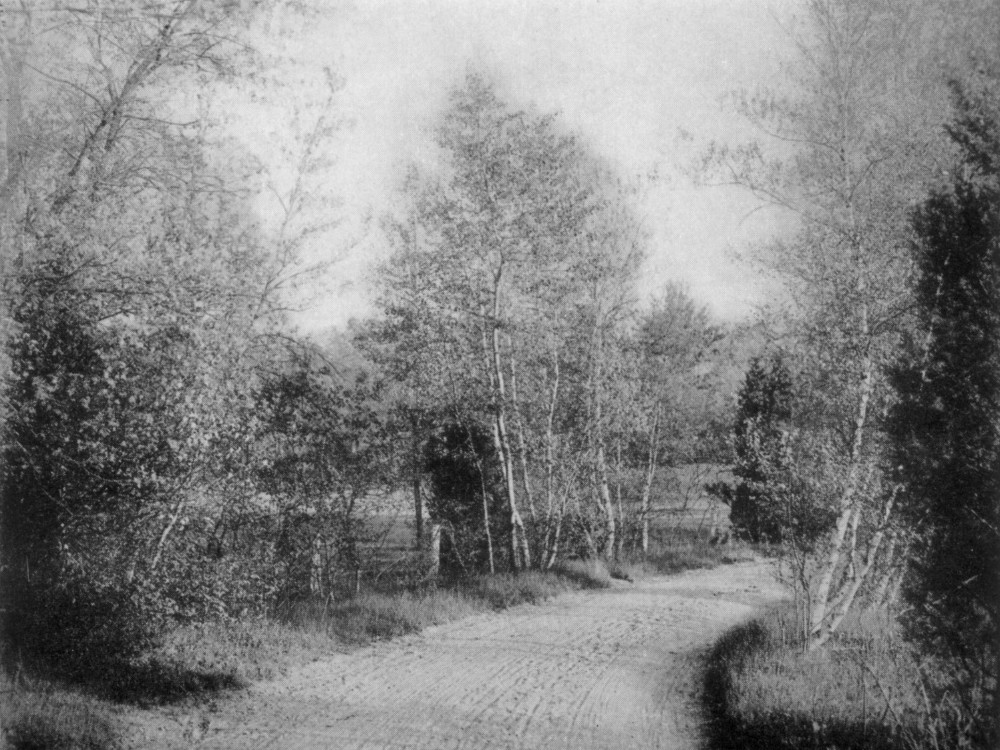 A MAY DRIVE - WELLESLEY 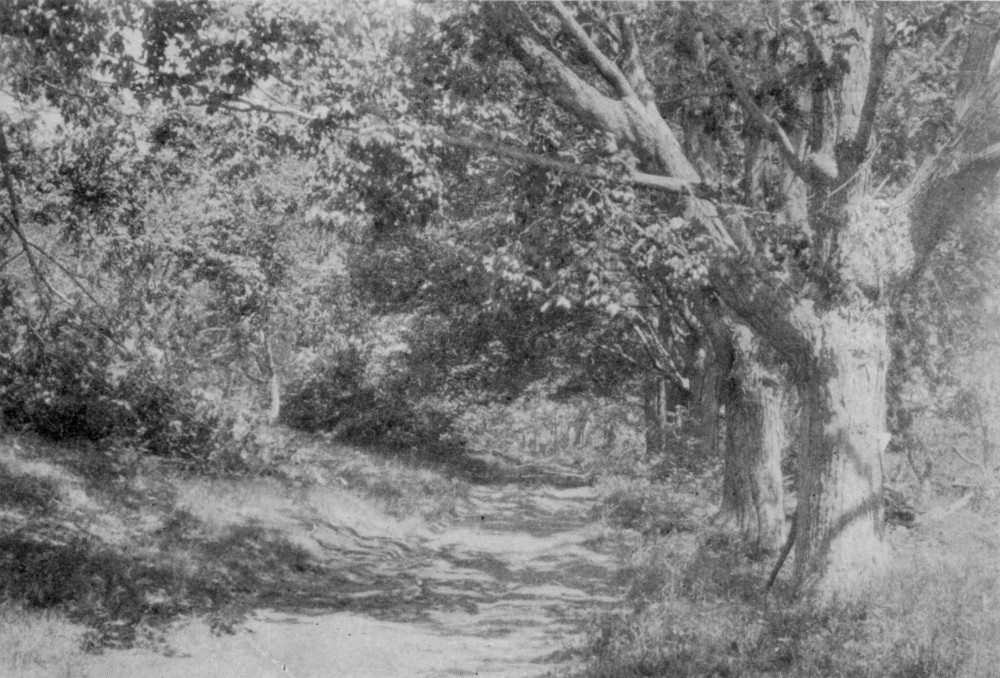 THE BRYANT MAPLES - CUMMINGTON 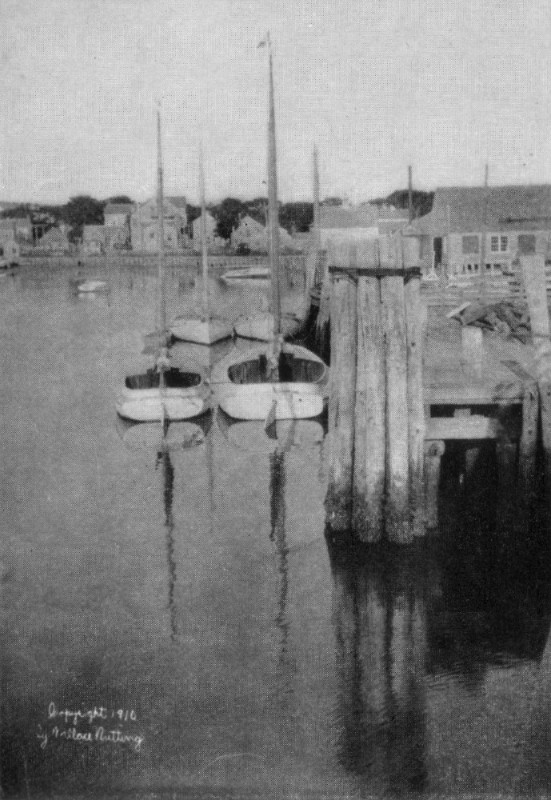 NANTUCKET DOCKS 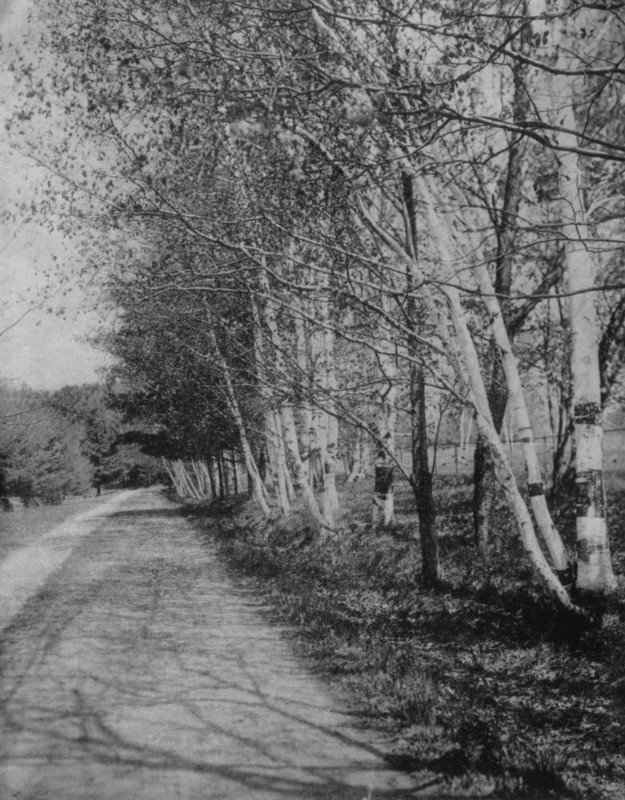 THE LIGHT SIDE OF THE ROAD - LENOX PILGRIM AND PURITAN ICONOCLASTS IT has so long been a habit of conceited,
modern Americans to think of our ancestors as stern and hating beauty, that
they have fairly persuaded themselves and most unread persons that their
viewpoint is correct. In the history of the town of
Sudbury there is a quotation from the town meeting records well back toward the
middle of the Seventeenth Century wherein "it is also ordered that the
backside of the meeting house be made hansom." We have here the instance
of the average man of the Pilgrim generation giving his judgment that beauty belonged
in his life and that it was appropriate in the edifice where he worshiped. We
have no reason to suppose that this instance is unusual. We have every reason
to believe that it was the rule rather than the exception. Interest and ignorance have reasoned
that image breaking meant lack of appreciation of beauty. It would startle some
who so think could they see a piece of furniture owned by Cromwell as exquisite
in all its lines, as dainty, as delicate in its fancy as one could hope to find
in any age. And we now, who have in our generation lambasted our ancestors for
their lack of artistic appreciation, are going back and copying with the most
faithful care the edifices which they erected because we have no modern styles,
good or bad, and we are obliged to hark back to the Pilgrim century for the
best inspiration in art and architecture. The most important pieces of American
Seventeenth Century furniture are eloquent of the Renaissance. They are,
indeed, degraded from its finest features. That beginning of degradation is a
part of the inscrutable decline of taste which culminated not only in America
but in Europe in the nineteenth century. There were religious reasons which
seemed sufficiently cogent in the seventeenth century for hating statuary,
especially if it had any suggestion of ecclesiasticism connected with it. We
do, however, find maintained a reminiscence of the Gothic in the domestic
architecture of that day, and a degree of taste in carrying out home decoration
that may shame our recent generations. The character of the Pilgrim
fathers, at least, was mild and kindly, as anyone who reads what is left us by
Bradford and Winslow must conclude. The distorted religious views exemplified
by Cotton Mather in pushing on the prosecution of witches was not in any
respect peculiar to him or to America. One has only to run lightly through
English history of the same period to find that amid all classes, prelatical
and ultra-protestant, there was a universal superstition against witchcraft.
The fact that this persecution was localized in America goes far to prove the
greater breadth and sweeter humanity of the immigrant as compared with the
dweller in the old world. One would think, to read the partial
and distorted references of many of the "humanists" in the nineteenth
century, that witchcraft persecution arose out of the "orthodoxy" of
the Pilgrim generation. This dark aspect of history had no more to do with the
reformed faith than with the moon's phases. People of every creed and no creed at
all took up the hue and cry against witches. Many did it from conviction, many
from the universal tendency of the mob to side with leaders, but mostly they
did it because they were the children of their age and took for granted what is
abhorrent to us. Religious conviction is always
respectable even when it is horrible. Thus viewed, the people engaged in that
persecution were white saints in comparison with the wholly diabolic Herrin
mob, by which more perished than in all our witchcraft craze. Every age has its
special sins and our age is certainly second to none in this regard. The settlers of Massachusetts were simple men, no more brilliant than those they left behind them in England. They did, however, rise to a better embodiment of the Christian spirit at Plymouth than was commonly found in that day, The sound common sense of the people of Holland with whom their leaders had dwelt influenced them. The Pilgrims have also suffered from the bitterly unjust saying of Holmes about their falling first on their knees and then on the aborigines. His spirit should have been too large, and as the writer believes, was too large, to have uttered this libel seriously. Nevertheless, as in the famous case of Doctor Osler, he was taken seriously. 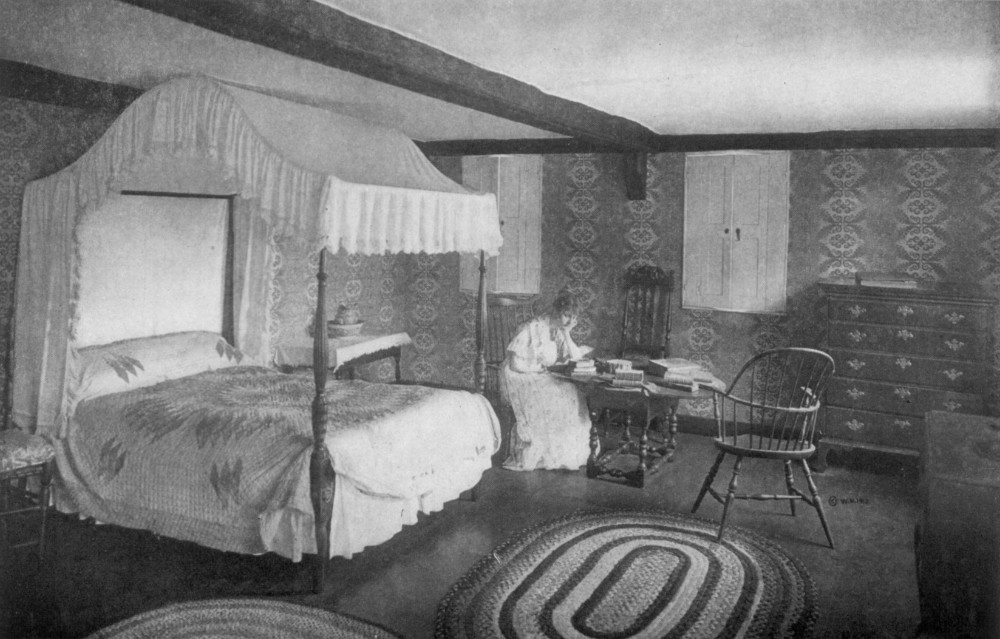 A SUNBURST BED - QUINCY HOMESTEAD 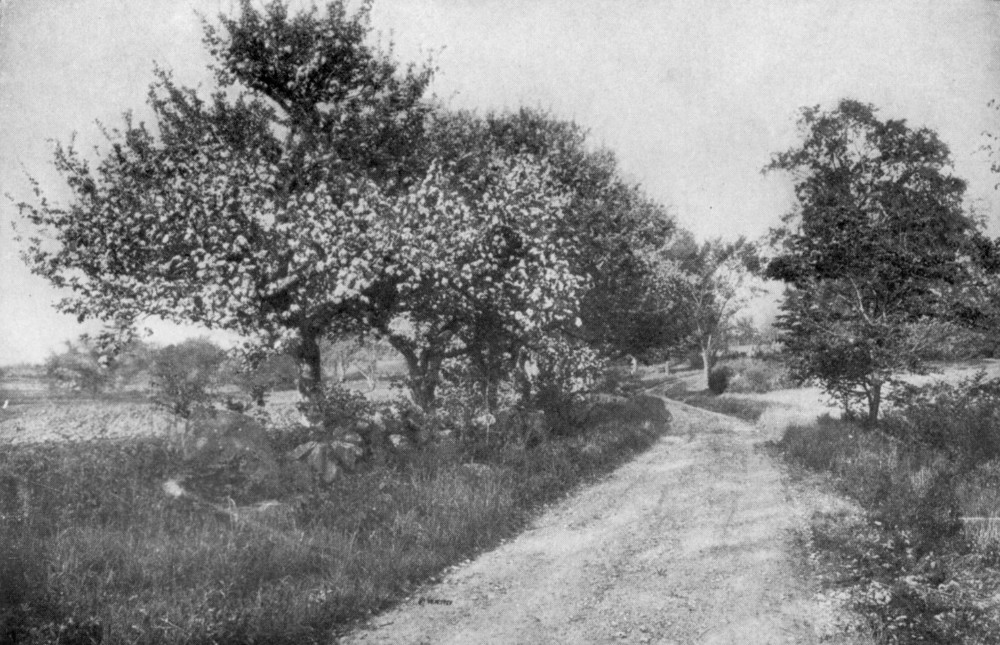 BLOSSOMING WAYSIDE - FRAMINGHAM 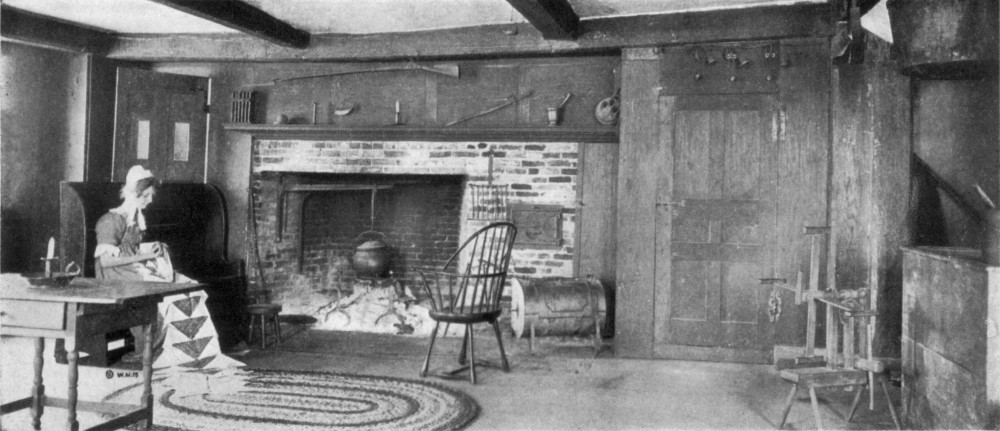 THE GOOSE CHASE QUILT - QUINCY HOMESTEAD 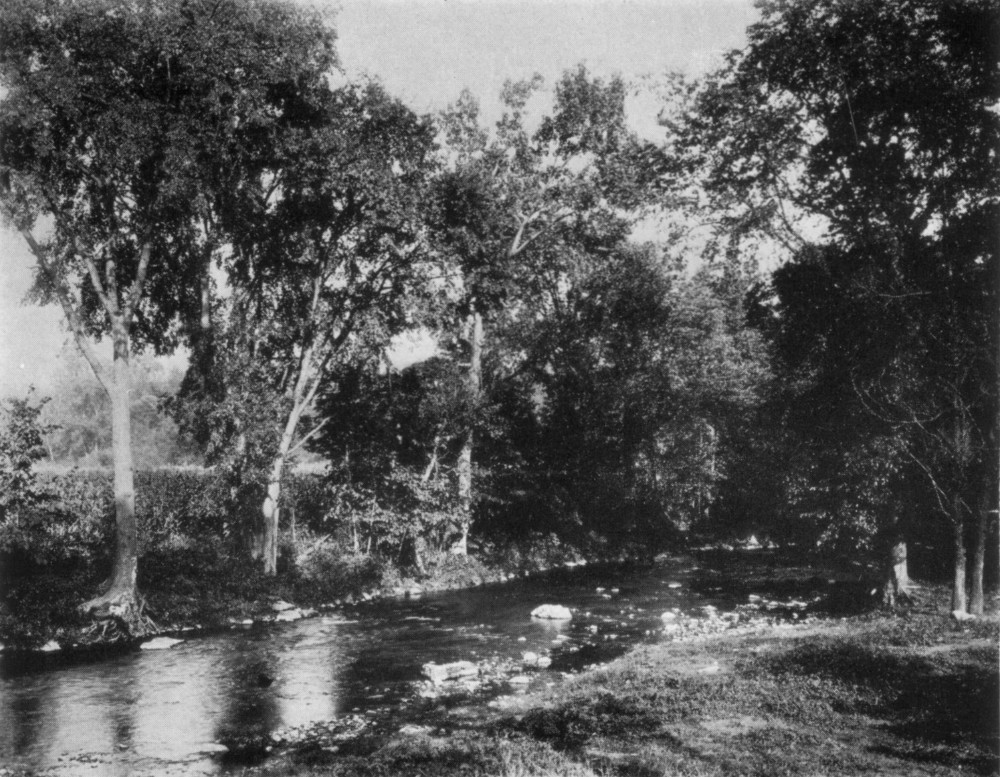 A BACK COUNTRY BROOK - WORCESTER COUNTY There perhaps has never in human
history been a case of more notable forbearance and patience in dwelling with a
savage people than was manifested by the Pilgrims toward the Indians. The march
of Winslow through the forest and his unselfish treatment of Massasoit when
that chief was rescued by him from an otherwise fatal illness is a chapter in
heroism and an exhibition of human nobility such as is seldom found on the
pages of history. It was the swashbuckler, deep-drinking colony of Merrymount
that brought on the notable instance of trouble with the Indians. Superficial
writers would have us believe that the pure simplicity of the life of the
Pilgrims made them especially bloodthirsty. Had it not been for Morton and his
ribald crew the fierce and terrible flash of Miles Standish's wrath would have
been unnecessary. Standish, by his alert boldness, saved the colony. It was the
desire, the prayer and the practice of the Pilgrims for a great many years to
live in utmost peace with their neighbors. Perhaps no colony settling under
similar circumstances has ever been more free from violence. These are the
simple facts and a decent regard for truth compels their reiteration. THE NORTH SHORE THIS district is preeminently the
fashionable shore resort of America Desert or Newport. It is fully as
accessible from the South and West as is Newport and far more accessible than
Mount Desert, whose beauties and incomparable excellencies are a thing apart,
reserved only for those who seek the best irrespective of its location. Before one leaves Lynn he has a fine
experience passing over the natural causeway to Nahant, This is an important
side trip if one loves the sea. Several of our pictures are on the bold shores
of Nahant, so long the residence of Senator Lodge. The wonderful drive along the north
shore beginning from the vicinity of Lynn and continuing into New Hampshire and
indeed into Maine, is a joy of a very distinguished sort awaiting those who
have never passed over it. The great improvements of late years have supplied a
safe road and stalwart bulwarks against the sea. The beaches have been redeemed
from shoddy features. Dwellings of high character have sprung up in the more
fashionable districts. The country just back of the waterfront which has been
given the name of Middlesex Fells is an amazing mass of boulders. The improved
Newburyport Turnpike which passes through a portion of this district, though
uniquely straight right and left, is far from a straight line up and down,
Hence its monotony is broken by fine sightly crests over which it marches. The traveler going directly to
Newburyport misses the fine features which render Cape Ann a locality perhaps
not second in interest to any in the country. As Salem is the point of divergence for this journey and also is itself a town unique, we glance at it first. Its great fire did not destroy much of its ancient architecture. Its delightful old streets are still redolent of the early eighteenth century. It is true the Witch House is disfigured by the wart of a modern shop added to its front. The proprietors are possibly unable otherwise to retain the edifice but it had almost as well be obliterated as to be in its present form. In the autobiography of Joseph H. Choate the house is shown as it was in the earlier part of the nineteenth century. It is also shown in other aspects in the January 1923 number of "Old Time New England." One may hope that a dwelling so flavored by a vital and characteristic though awful period of history may sometime be restored to its early condition. The supposedly first brick house of the town, at last accounts was still neglected. The highest praise is due to Miss Emmerton for her efforts, so largely successful, in restoring the House of the Seven Gables for the romantic and literary tourist. She has also done distinguished work in connection with other dwellings. 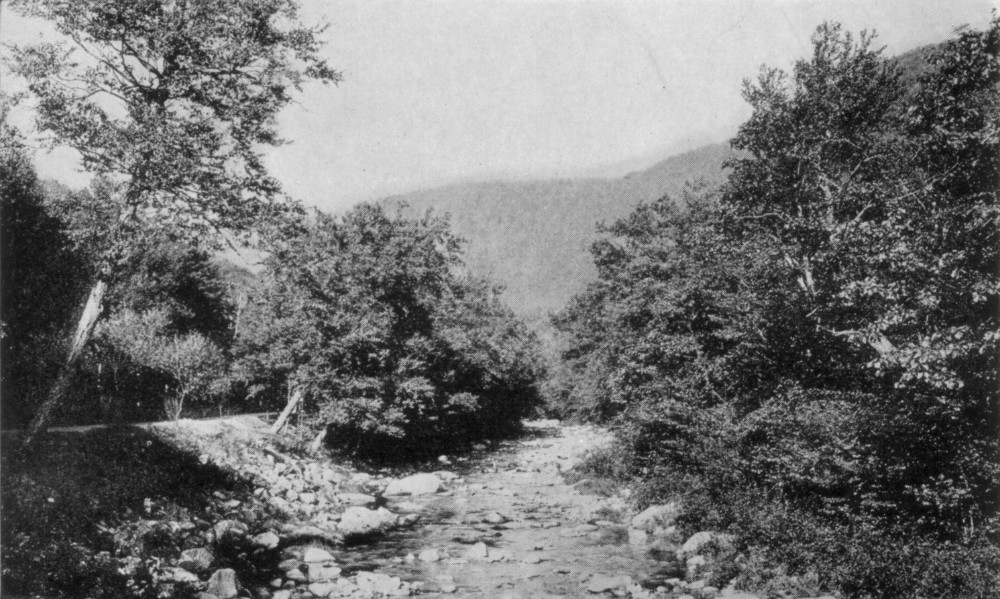 THE STREAM - MOHAWK TRAIL 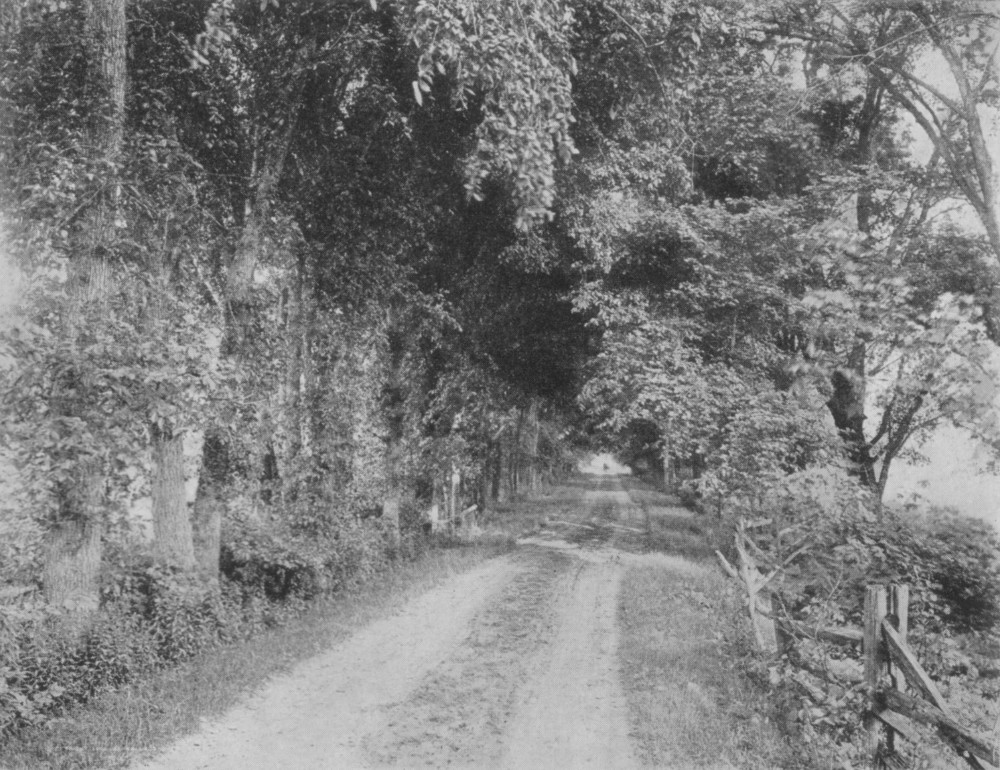 THE SEVEN BRIDGE ROAD - LANCASTER 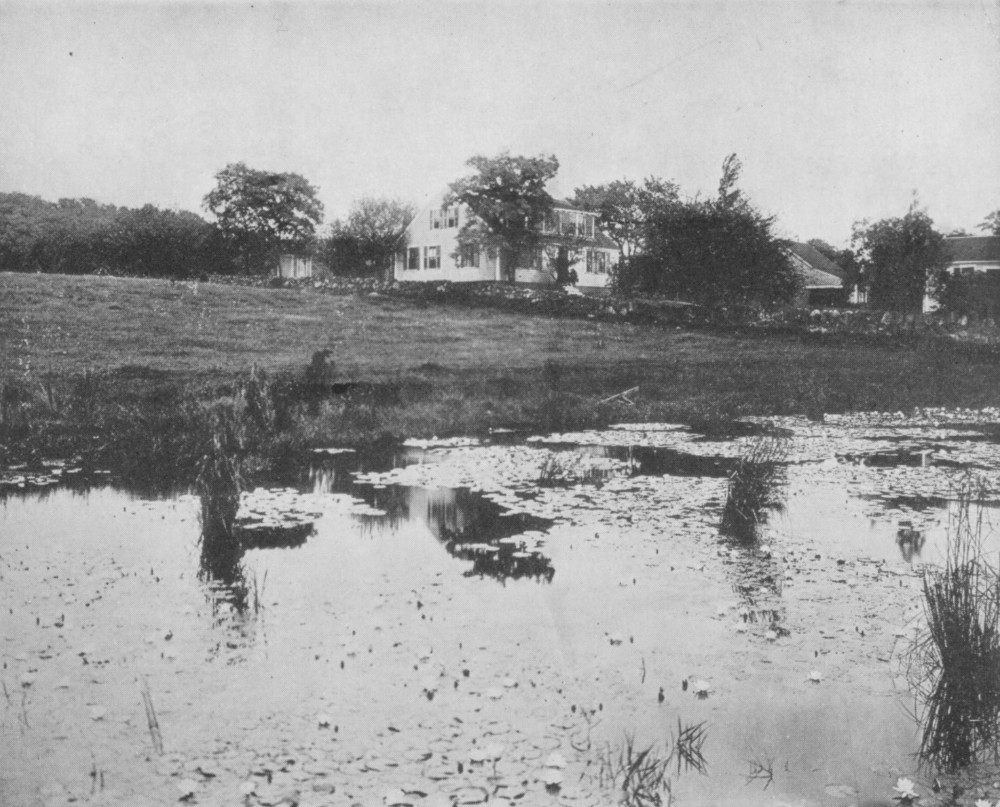 A FALMOUTH WATERSIDE 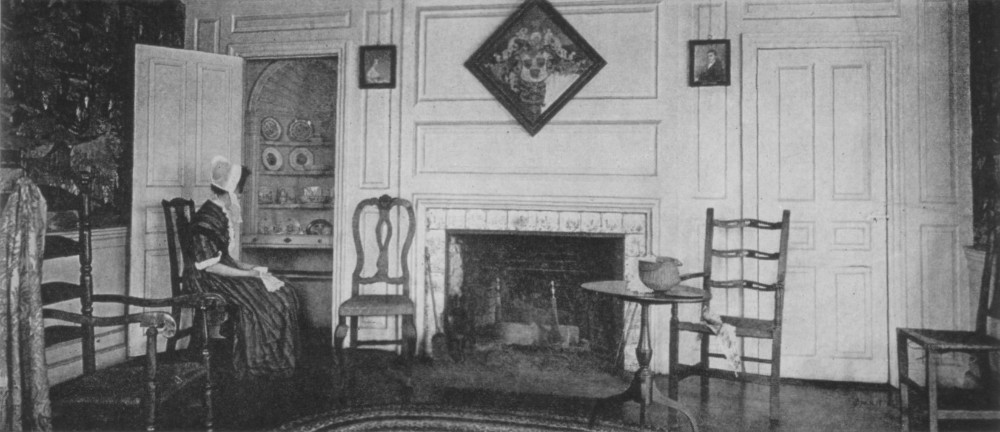 THE DINING ROOM - QUINCY HOMESTEAD THE CRADDOCK MANSION, MEDFORD Lately also the more recent but
quite typical Nichols-Pierce mansion has come into the hands of the Essex
Institute, at whose headquarters so much that is important in early American
history is preserved. All in all, Salem is perhaps the
finest center to study the old town life of America with the possible exception
of Portsmouth, New Hampshire. Salem, being older than Boston and happily not so
large, has been able to retain much of its earlier flavor. Just before reaching Salem one is
called off by the lure of Marblehead. Wonderful old houses remain here, there
being at least three or four of great distinction which are all available for
examination. Perhaps the Lee mansion has a parlor as interesting as any in the
North, or, if its prestige is challenged, that can be only by the parlor of the
house in Danvers, perhaps not open to the public, which was built as a summer
place by "King" Hooper. The bay of Marblehead is a gem of
beauty and one who loves at once natural scenery and old America finds them
both in this town at their best. One is here away from the bustle of the city,
yet by no means distant from the attractive features of American outdoor life.
Marblehead is a yachting center; its harbor gay with snowy winged craft; its
streets uneven, winding, full of surprises, and its back country appealing from
its variety of roadsides. We lightly pass over most of those
features which properly belong in the guide books and holding to our quest for
natural beauty chiefly, go on our way. Through Beverly to Manchester and
Gloucester the semi-urban condition prevails. Here and there in quaint nooks
one may ferret out an early and picturesque dwelling. Largely, however, the
commonplace or the grand modern house predominates. Gloucester, the north shore center
for deep sea fishing, impresses the sensitive traveler with the tragedy of that
calling. The fact that men are still found to undertake fisheries off the Banks
is one more instance to prove that humanity follows its bent, irrespective of
the dangers along the way. An occasional salt like "Fishin' Jimmy"
may still be found about the littoral, overhauling his nets. Gloucester is
divided between its fishing for cod and for tourists, and more and more it is
succeeding in the latter quest. The splendid bold shores about Bass Rock and
Magnolia where, whenever the floods lift up their waves, the eternal conflict
is resumed between cliff and sea, give the wanderer the sense of unlimited
powers still at work and allow him to take up into his wearied person the
strength of the sea. Rockport, the last land on Cape Ann, is also the last mainland resort to compete for marine conditions in summer similar to those on Cape Cod. Rockport is a smaller and less sophisticated Gloucester. 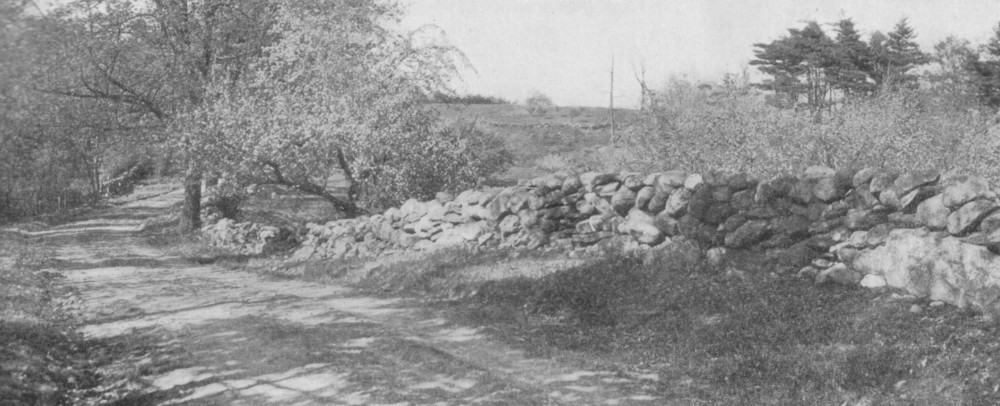 HONEYMOON WINDINGS - WESTMINSTER 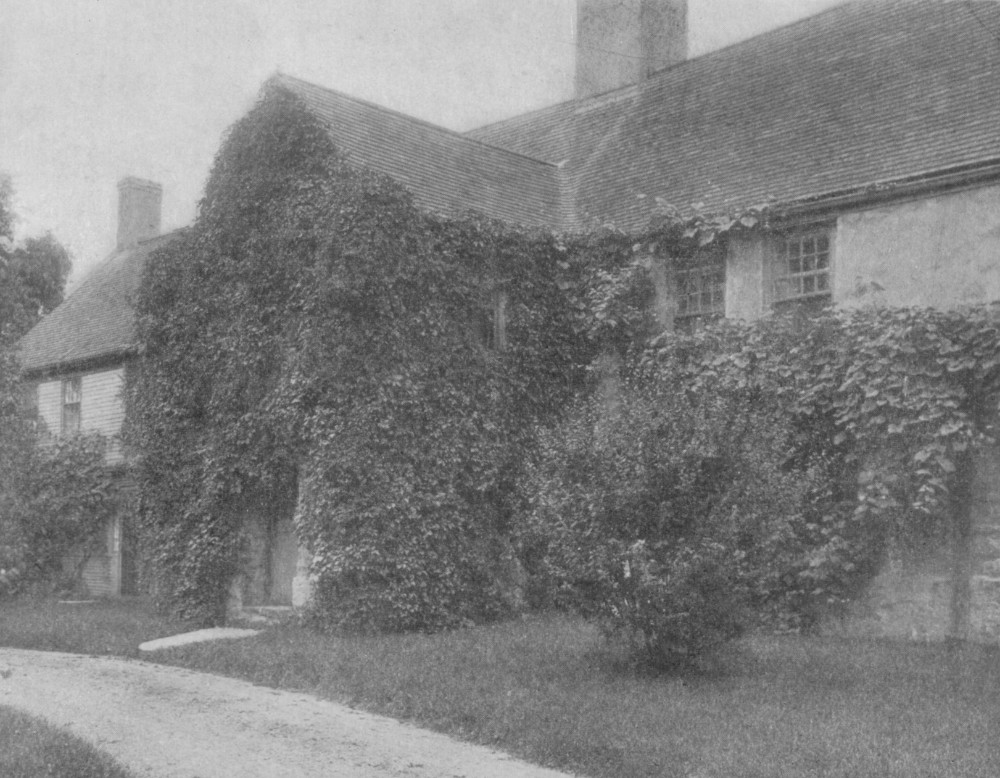 PIERCE-LITTLE PORCH - OLD NEWBURY 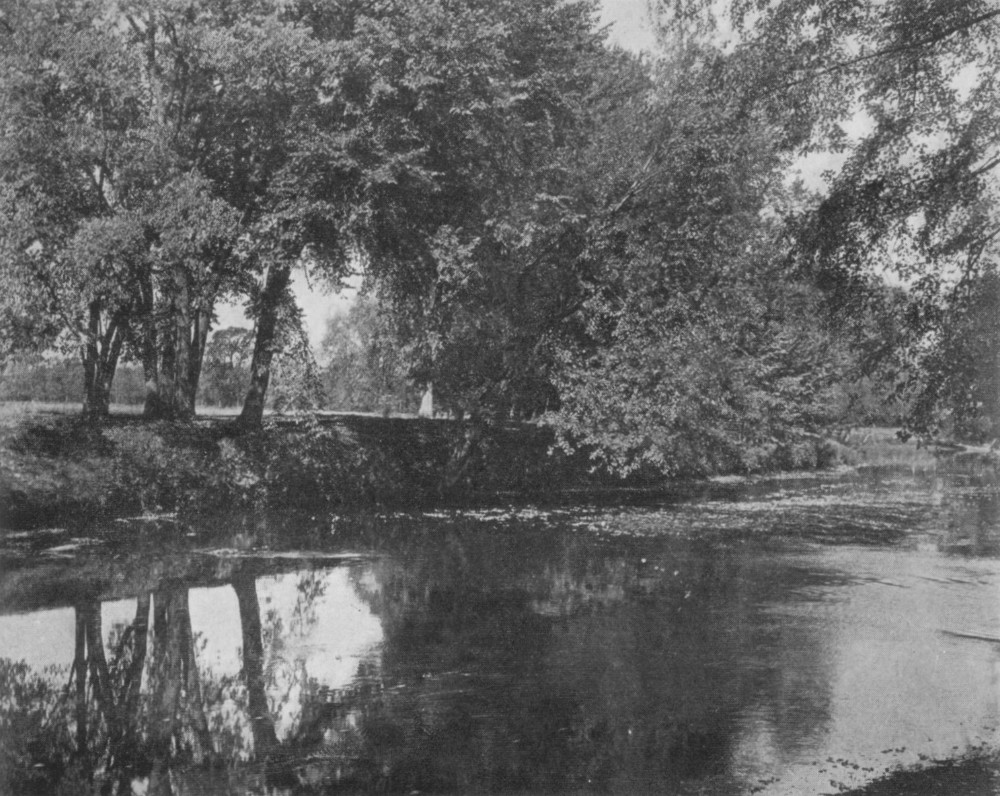 ABERJONA WATERS - WINCHESTER 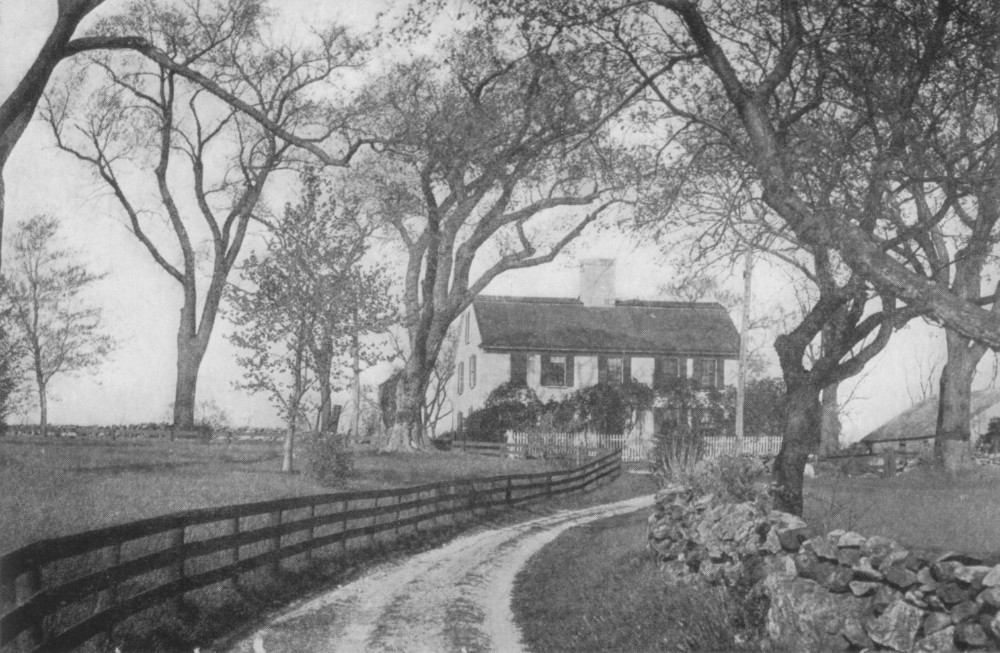 UP THE LANE - NORTH ANDOVER Following the Newburyport Turnpike
from Boston one finds at Lynnfield that curious institution in America — a
district lying back from the town that gave it its name and was originally
portioned out by the people of such a town for farm lands. This is more like
the continental scheme whereby people leave their village dwellings and spend
their days on their more or less remote lands. Just back of Lynn, Salem and
probably other towns there were areas owned by city dwellers who were perhaps
engaged in other activities than farming but who, nevertheless, depended in
part on farm lands to which they went in summer or from which they drew their
supplies. At Danvers there is a notable instance to which we have referred in
the "King" Hooper house, a wonderful mansion erected as a summer home
by the merchant of Marblehead who was so successful and so ready to expend his
substance in a lordly way that he got his epithet. In Danvers, also, there are
fine outlooks and in the valleys remarkable old dwellings which we have
pictured and others which are perhaps worthy of closer attention, as the
Rebecca Nourse House, the Danvers Historical Society House and various others
which invite a pause. Much that is interesting is found on
the cross roads leading off the Pike; for curiously the Pike itself has no
villages of any considerable size upon it. At Topsfield village is a unique
house, that of Parson Capen, having the gable and front overhang, a combination
probably not well matched elsewhere in America. Approaching Newburyport, some
of the Dummer Academy edifices fascinate us. In Newburyport itself there are
perhaps more three-story houses of the period of 1780 to 1800 than in any other
similar area. The stately High street and many other streets are filled with
such houses. While the style of architecture is not of the best period, the
dwellings were, nevertheless, built with the greatest care and the hallways are
very attractive, many having the divided stair which turns both ways from the
landing. This town and many others in Massachusetts have historical societies
housed in quaint dwellings affording no end of interest. As one goes north from Salem through
Beverly and Ipswich to Newburyport there are innumerable calls to the eye in
the ancient homes. The Ipswich Historical Society which has its headquarters in
the Whipple House, sometimes called the Saltonstall House, near the station,
has what is perhaps the most remarkable room in America. We refer to the great
fire room with its cross summer beam and its wonderful paneled gunstock posts
supporting the cross summer. Whoever wishes to see the earliest American life
at its best should examine these great beams and posts and get the fine effect
of solidity which they afford. At old Newbury the Pierce-Nichols House, off the road, supplies us with a marvellous porch which is not equalled elsewhere in this country, Its beginning in stone and terminating in brick, its niche over the door for a lantern, sundial or saint as you may choose to decide; its thick wall, quaint windows and tile floor give a suggestion of Old England in New England. The heavy walls, the deep window embrasures of the stone house show an English effect and the remarkable buttressed chimney built in part on the exterior of the rear, is only rivalled by the stone house of Guilford, Connecticut. The dwelling we describe is not shown except by the courtesy of the owners. It is set amid broad acres of the original great domain and for a manor house in New England presents more features true to the ancient life than we shall find elsewhere. 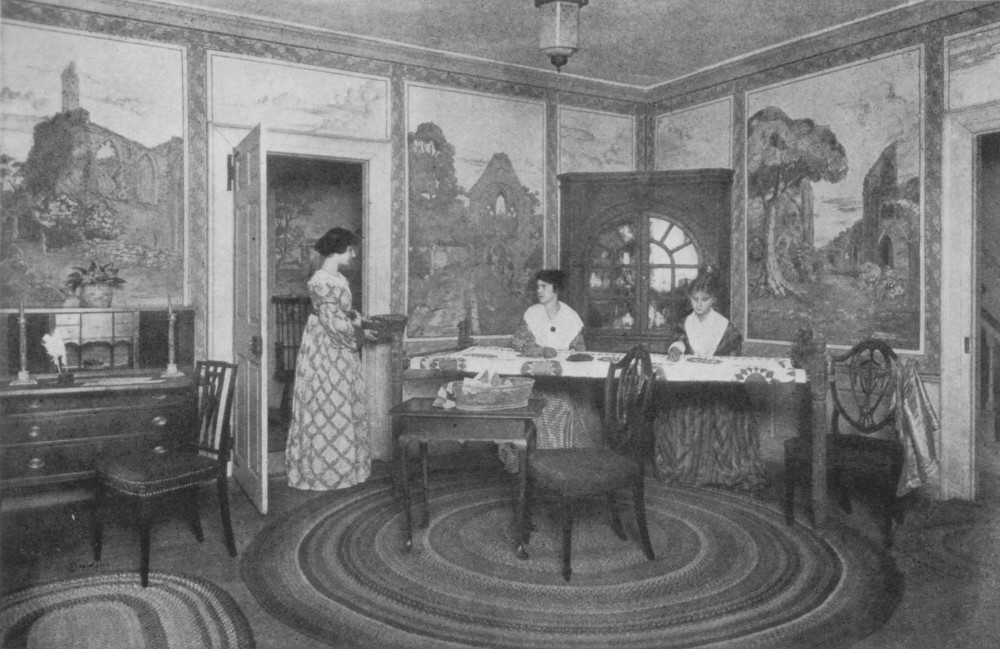 PATCHWORK QUILTING - NEWBURYPORT 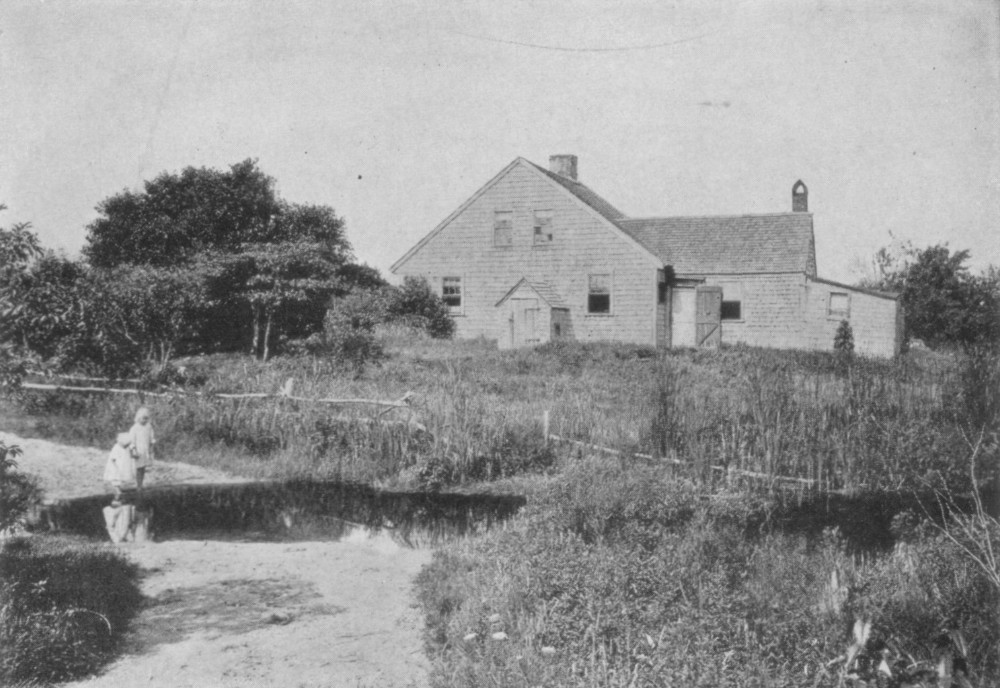 A HYANNIS COTTAGE 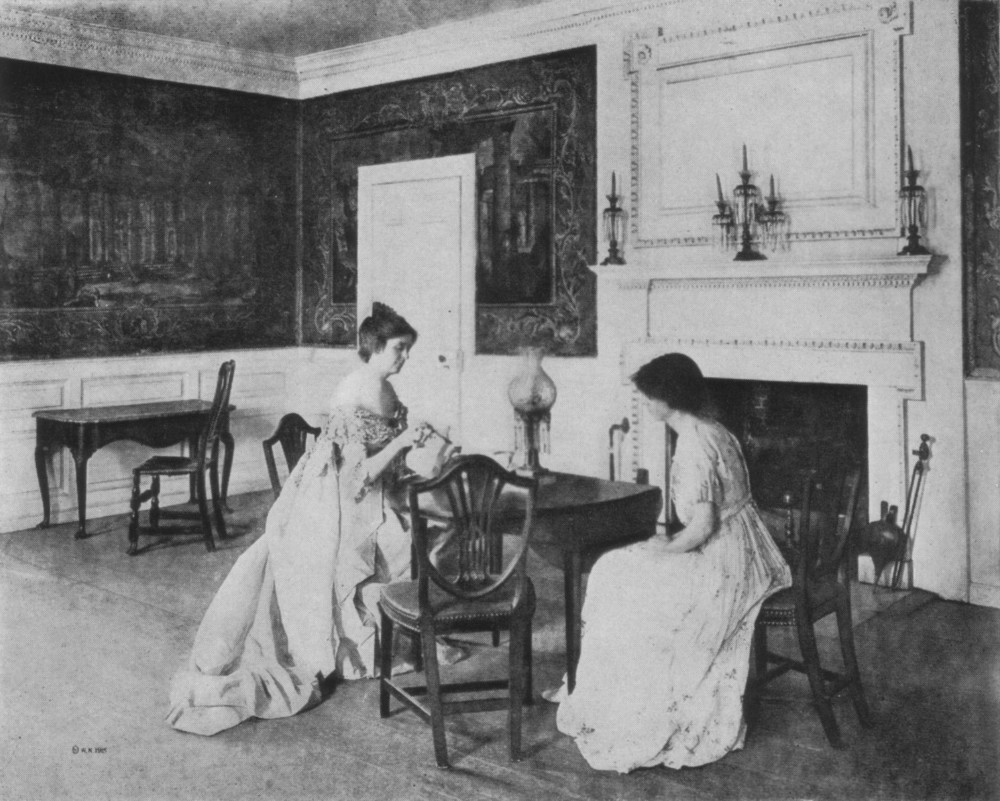 TEA IN THE STATE CHAMBER - LEE MANSION 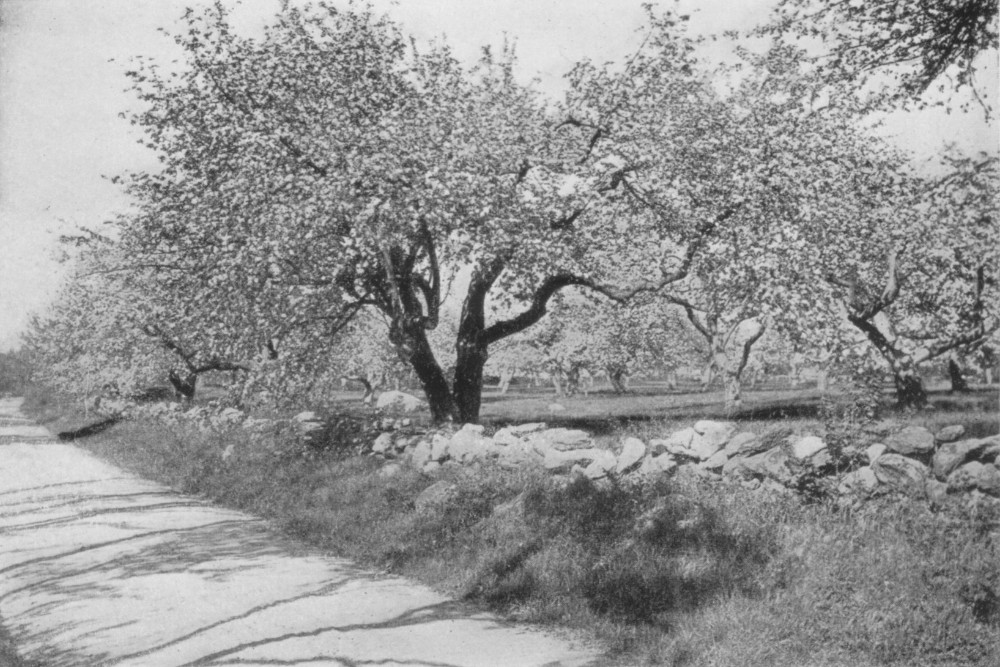 THE HOPE OF THE YEAR - HARVARD On the main road is the remarkable
dwelling now used as an inn, belonging to the Society for the Preservation of
New England Antiquities; the Short house on the opposite side, and not a few
others have very early and rare features. And so we come again into Newburyport
by this second route. On the river here is what, in its day, attracted much
attention, being the first suspension bridge in the region. The drives by the
river, mostly cross roads, introduce us to alluring glimpses. Going from
Newburyport through West Newbury to Haverhill one passes a great many very
early houses and mounts the crest of lofty ridges and crosses fine water
reaches, so that all together this drive may be commended as among the best in
the country. |